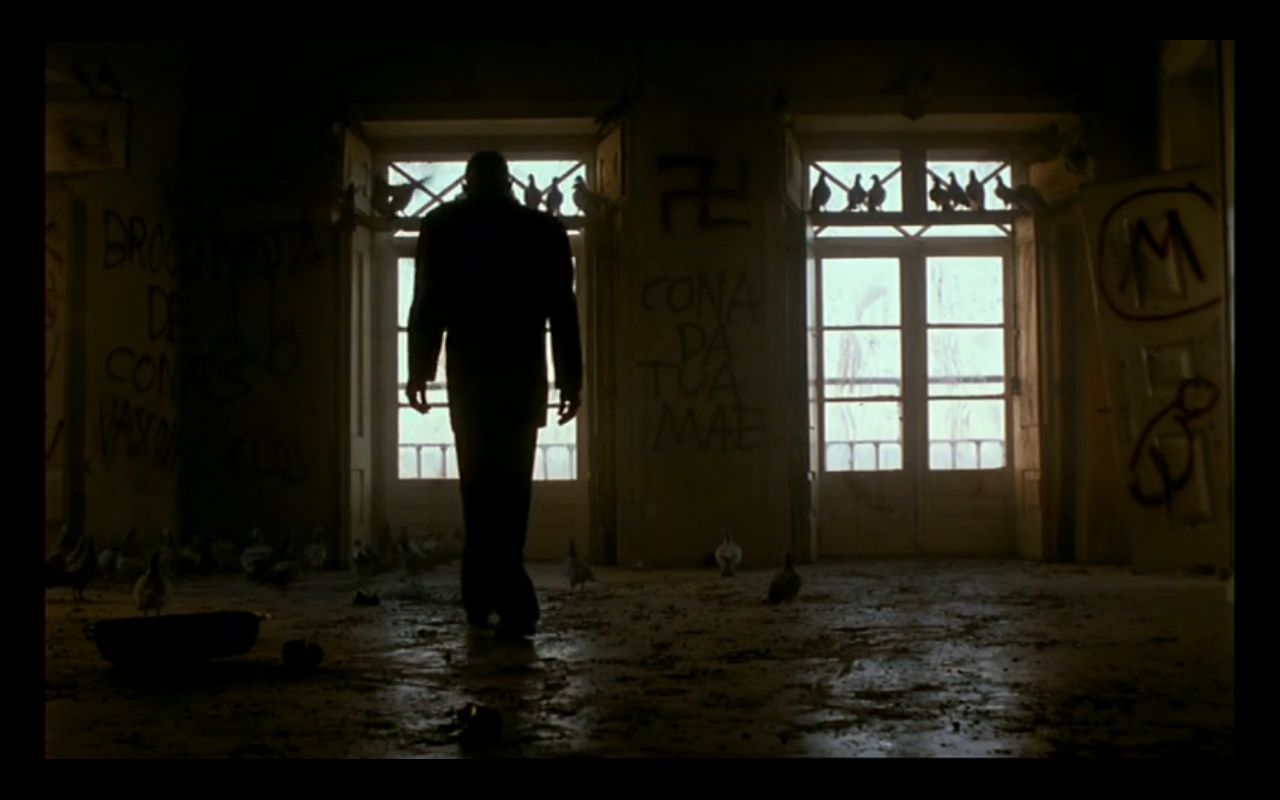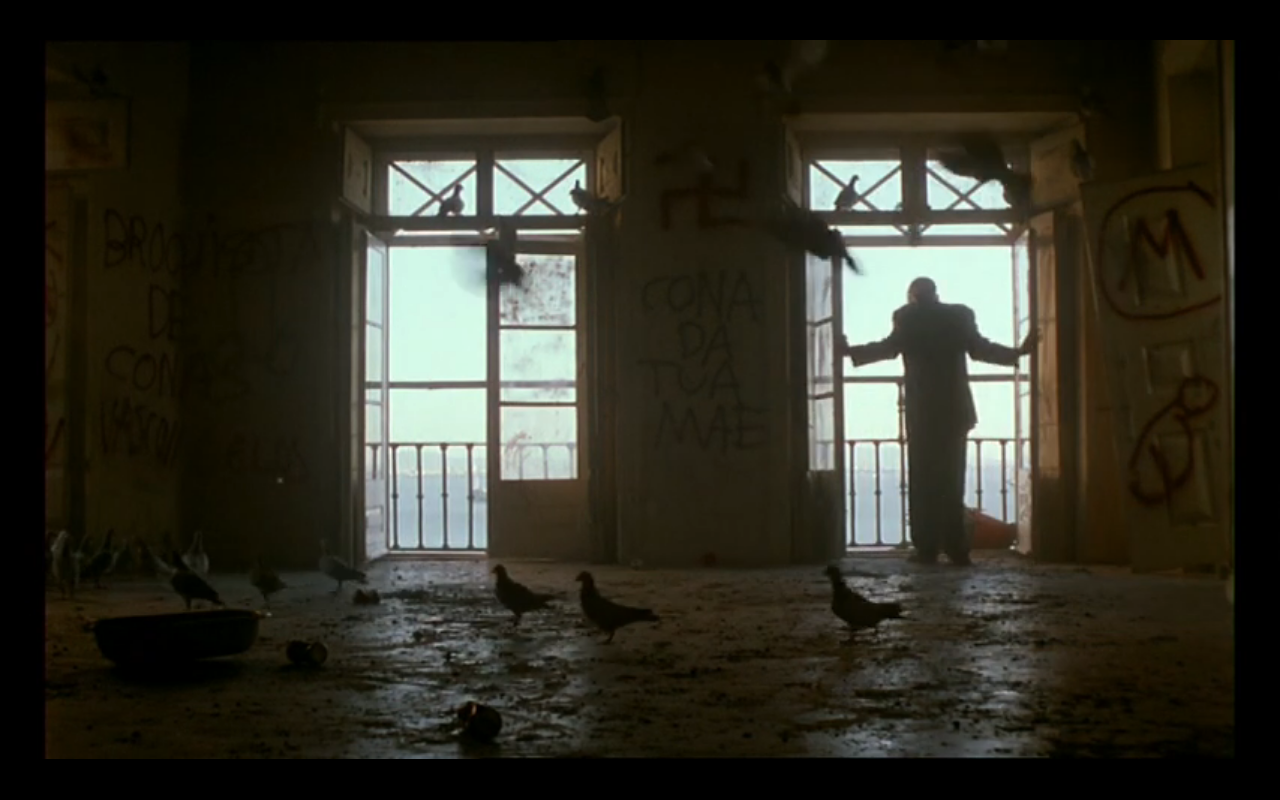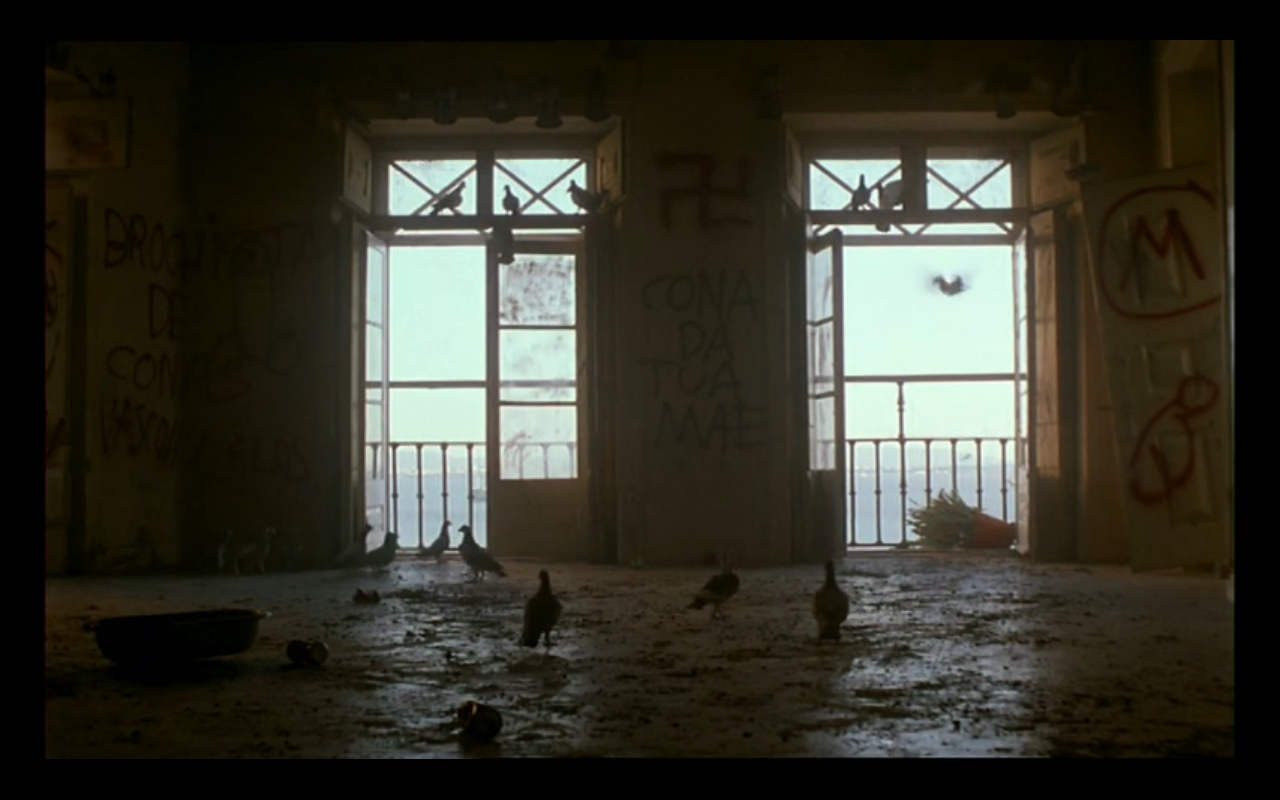Conversa com André, Carolina, Francisca, Laura, Leonor, Madalena, Maria e Matilde, através do Teams, a propósito de três excertos de filmes com janelas
Conversation with André, Carolina, Francisca, Laura, Leonor, Madalena, Maria and Matilde, through the Microsoft Teams, about three movie excerpts with windows
Em Rear Window o personagem está imóvel e vemos o que ele consegue ver a partir da janela da sua casa. Primeiro com os olhos, depois com os binóculos e depois com a lente da máquina fotográfica.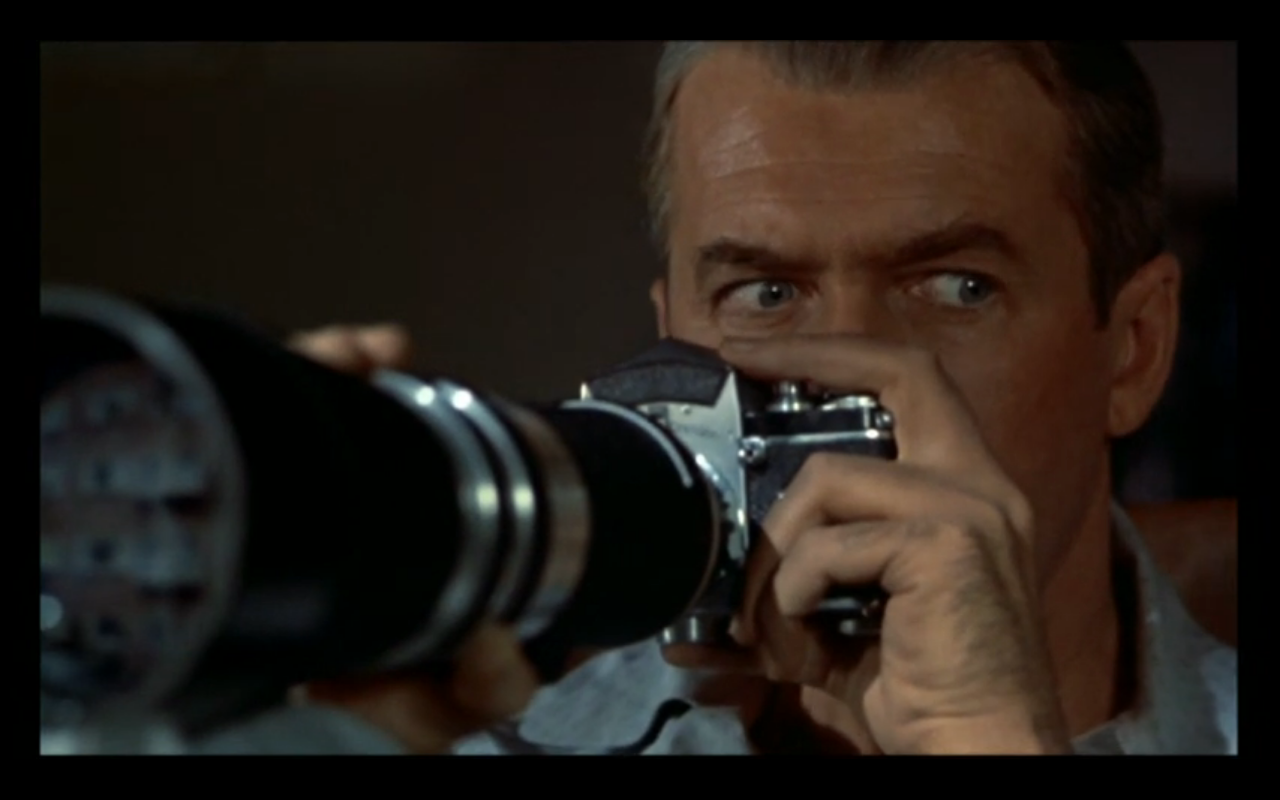
Vemo-lo a ver e vemos o que ele vê. Os planos vão-se tornando mais próximos, vemos mais. Os planos da cara do personagem também se tornam mais fechados: quando ele vê o homem a arrumar as facas, vemos a expressão dele a mudar nos olhos dele.
Nós, com este confinamento, estamos como ele: fechados num sítio, quase impotentes, a ver o mundo lá fora pela janela.
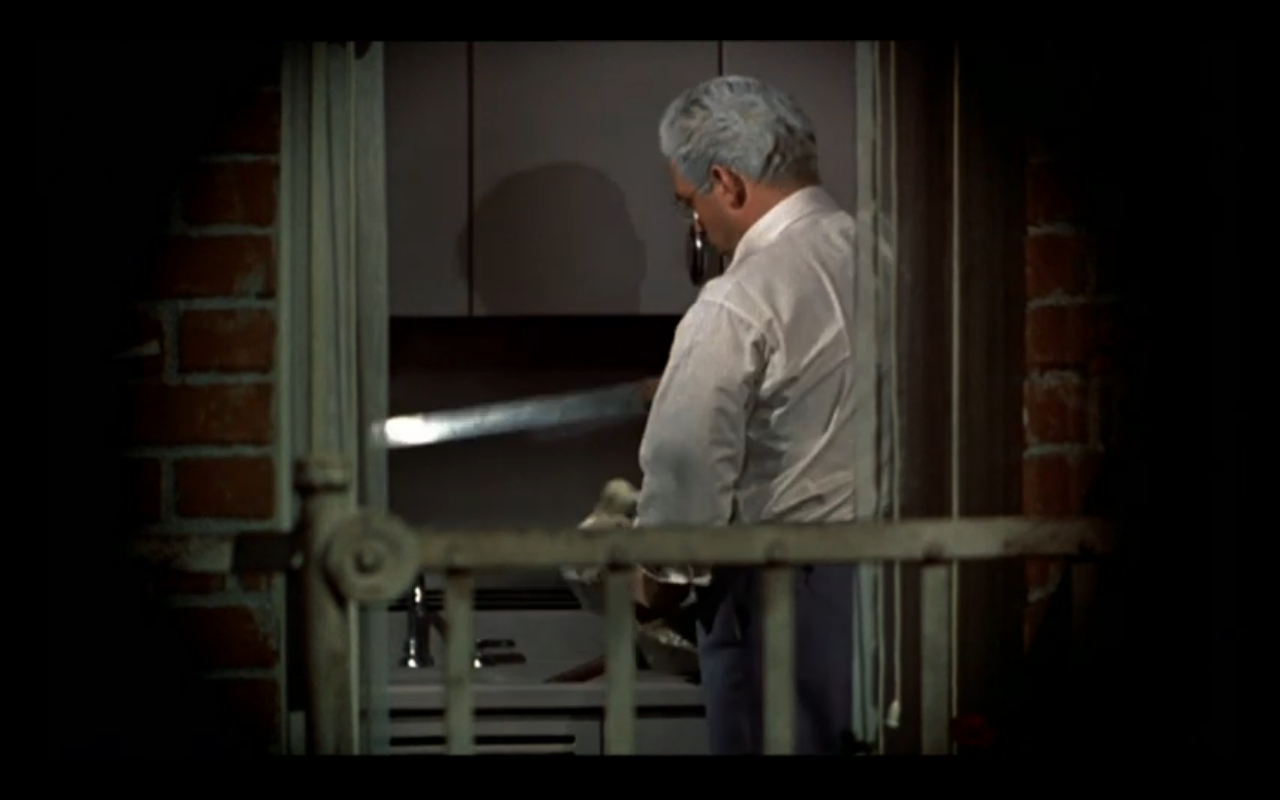
In Rear Window the character is still and we see what he can see from the window of his house. First with the eyes, then with the binoculars and then with the camera lens.
We see him seeing and we see what he sees. The plans become closer, we see more. The plans of the character’s face also become more closed: when he sees the man putting away the knives, we see his expression changing in his eyes.
We, with this confinement, are like him: locked in a place, almost powerless, seeing the world out the window.
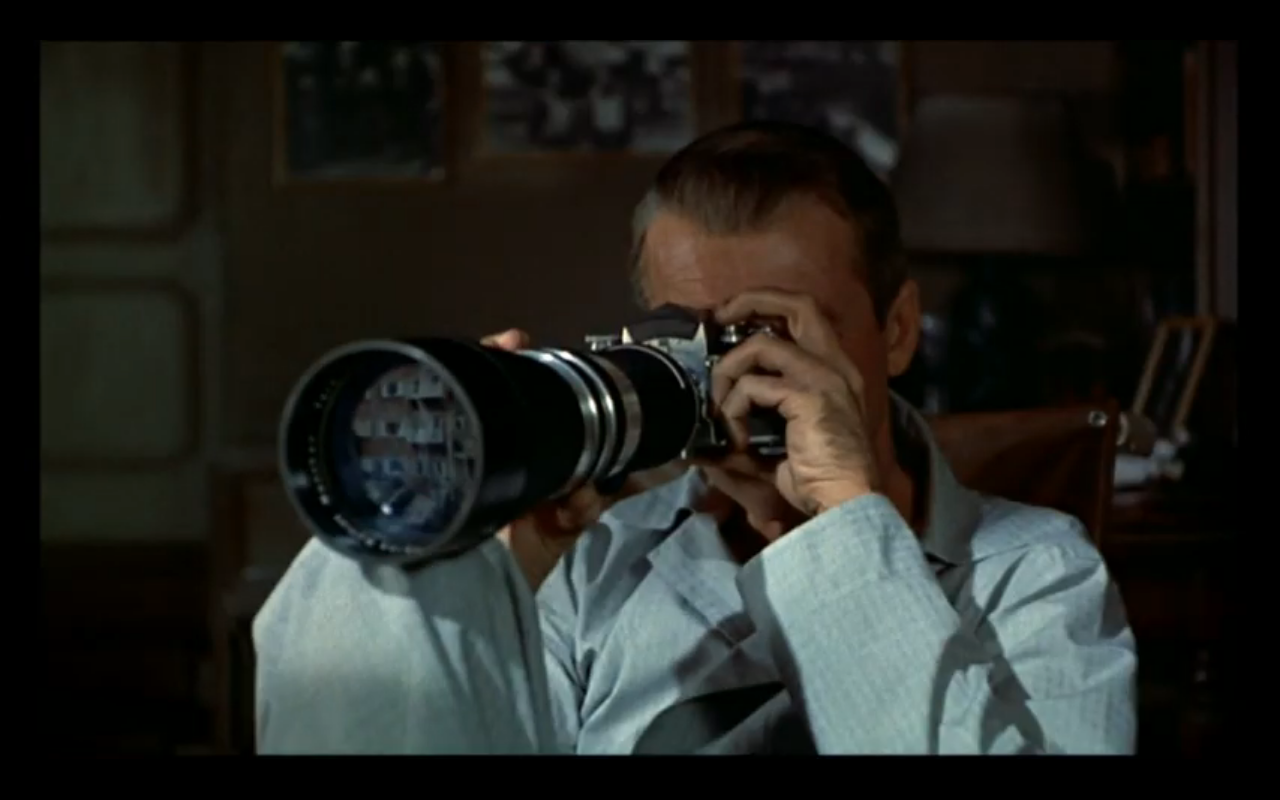
__
Em Lá-Bas a janela não está aberta, tem os estores para baixo. Enquanto o personagem de Rear Window se esconde para ver, preocupado em ser visto, aqui não é bem isso. Temos a visão da janela por dentro e do que se vê dentro para fora, mas sem sair. Não é tanto ver o que se passa – como em Rear Window – mas olhar lá para fora. Aqui também não vemos quem está a olhar. Mas sentimos a solidão.
In Lá-Bas the window is not open, it has the blinds down. While the character of Rear Window hides to see, worried about being seen, here is not quite this. We have the view from the window inside and what you see inside out, but not coming out. It’s not so much seeing what’s going on – as in Rear Window – as looking out there. Here we don’t see who’s looking. But we feel the loneliness.
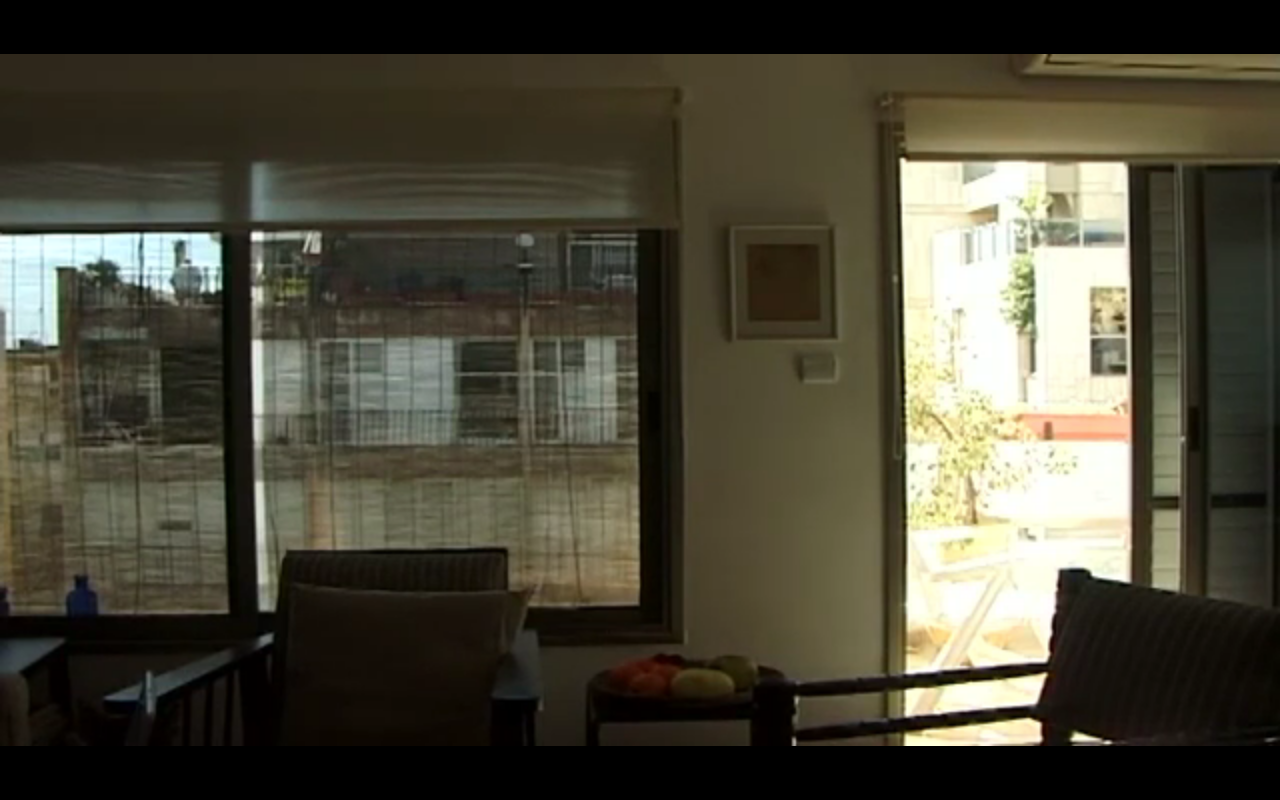
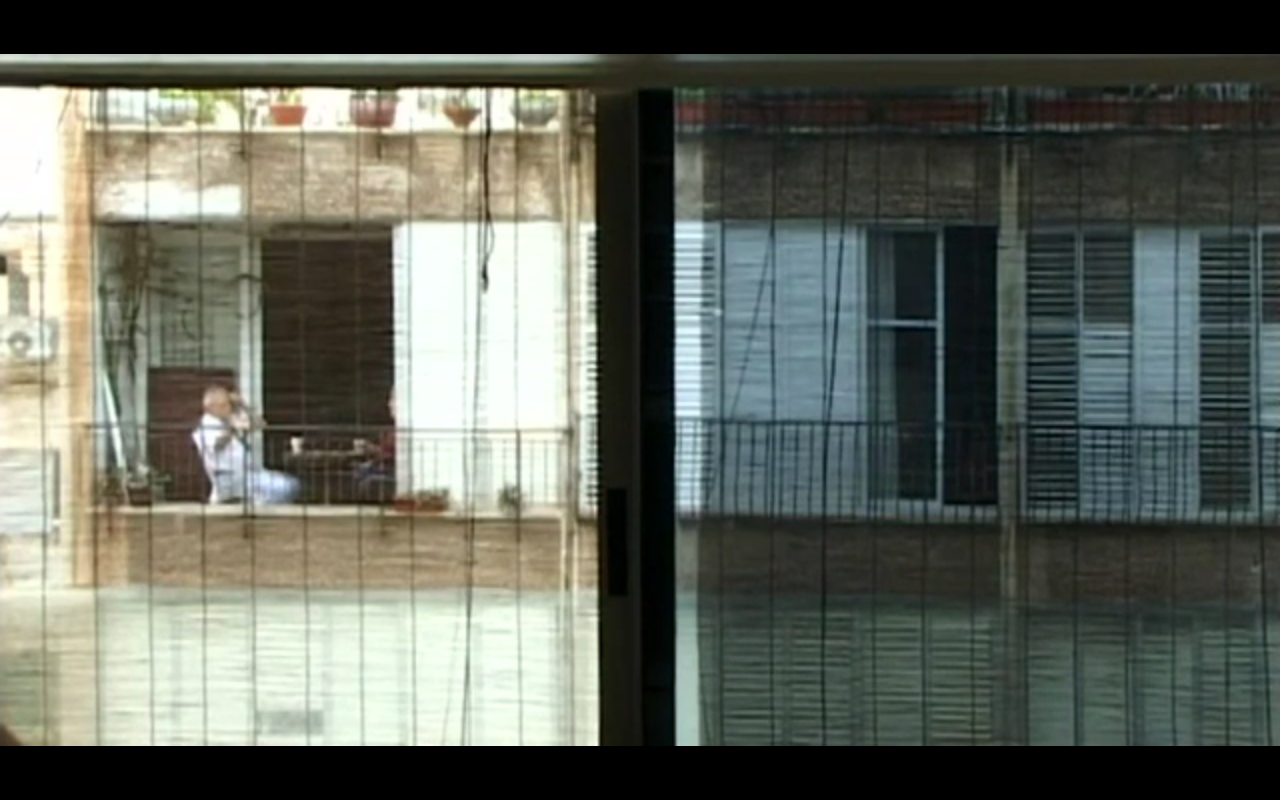
__
Na Comédia de Deus vê-se pouco do que está lá fora e isso dá curiosidade sobre a paisagem. O plano foca-se no que está dentro: uma sala vazia, com grafitis, pombos, o chão sujo. Vemos um espaço interior, mas aquilo que vemos são coisas que associamos à rua. Depois entra um homem e abre a janela – tem de a forçar para a conseguir abrir. Quando abrimos uma janela é para entra ar e para sair alguma coisa. Quando ele abre a janela é como se fizesse com que aquele espaço voltasse a ser um espaço privado, uma casa.
In A Comédia de Deus one sees little of what is out there and this gives curiosity about the landscape. The plan focuses on what’s inside: an empty room, with graffiti, pigeons, the dirty floor. We see an inner space, but what we see are things we associate with the street. Then a man comes in and opens the window – he has to force it to open it. When we open a window it’s for air and for something to come out. When he opens the window, it’s like making that space a private space again, a home.
